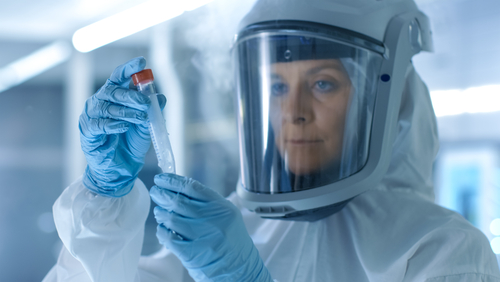
Terrorist threats against the United States continue to grow and evolve, including the use of non-conventional weapons, begging the question of whether this country is well-equipped for such attacks.
The conclusion of experts who testified Thursday before the U.S. House Homeland Security Subcommittee on Emergency Preparedness, Response, and Recovery was that the country is not equipped. The hearing was entitled, “Defending the Homeland from Bioterrorism: Are We Prepared?”
“I think it’s important to remember that the nation is not adequately prepared and has not been adequately prepared for more than a decade now,” said Asha George, executive director of the Bipartisan Commission on Biodefense. “And the hearings this committee has had numerous times have demonstrated that. Worse, current efforts to develop new technologies to detect the threat are insufficient and are going in the wrong direction.”
One such program George referred to is BioWatch. Launched by the Department of Homeland Security in 2003 in the wake of anthrax attacks that killed five Americans following 9/11, the program disseminates detectors of biological agents throughout the country. The program should be replaced with better detectors, George said, but she cautioned the new initiative the Department of Homeland Security (DHS) has in place, Biodetection 21, or BD21, as not adequate technology.
Jennifer Rakeman, assistant commissioner and director of the Public Health Laboratory at the Department of Health and Mental Hygiene in New York City, told the committee the detection of agents by national agencies falls short.
“You can’t approach biological agents and the detection of biological agents the same way as you do radiological and chemical,” Rakeman said, adding that a biological agent must be detected among a mix of other biological material found in the environment, both good and bad.
The experts agreed one better way to replace the BioWatch system, which takes up to 36 hours to confirm that a biological agent is present, would be to provide portable sampling units that offer faster turnaround times. This may mean partnering with the private sector to develop the technology for the government. The panelists said the technology exists but that it doesn’t yet meet the gold standard.
And even when state-of-the-art technology is being deployed for detection, it may be technology used for a military setting and not appropriate for an urban center like New York City, Rakeman added.
“Again, it’s a technology that’s being pushed on locals without any input,” she said.
Local public health departments are sometimes invisible when it comes to the process of adopting new technologies, the panelists agreed. This was the argument Umair Shah, executive director of Public Health for Harris County, Texas, made before the committee.
“There’s a science and an art to public health just as in medicine and we must have access and availability to as much information as possible to make decisions,” Shah said. “This means that federal, state and local partners must plan together today in order to protect our communities more effectively for tomorrow… Ultimately a biodetection hit must be a shared one involving local decision-makers and responders, front and center. This means federal, state and local partners must work together as do public health and emergency management, law enforcement, and health care delivery. Ultimately we are all part of the same team and our communities expect it.”
U.S. Rep. Peter King (R-NY) repeated those sentiments.
“It’s imperative that our communities are well-positioned to detect, protect, and decontaminate biological warfare agents. As the sophistication of biological weaponry improves, we must be ready,” King said.




